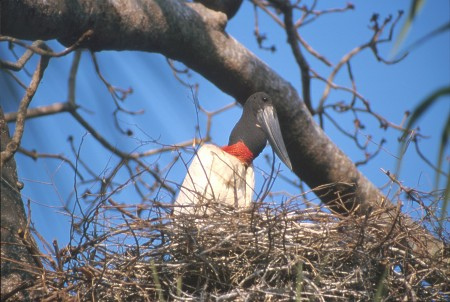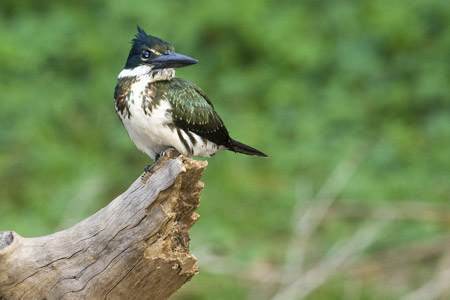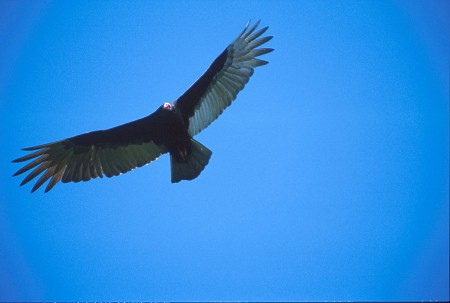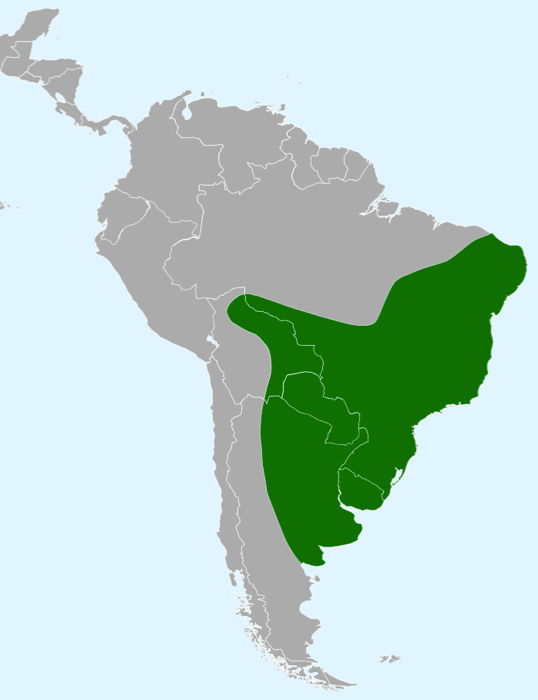Ema - American Rhea
There are five different subspecies. Those you are likely to see in the Pantanal are Rhea americana araneipes, alongside the nominal Rhea americana americana. However, identification of specific subspecies is extremely difficult - and based on subtle differences in colour and average size ... with the Pantanal species being very slightly bigger.
Behaviour and Habitat
Ema's preferred habitat is open grassland and cerrado. They range down the eastern side of South America - south of the Amazon basin, through southern and central Brazil, Uruguay, Argentina, Paraguay, and the lowland areas of Bolivia. Another similar species, the Lesser Rhea (Rhea pennata) extends into the Altiplano and Patagonian regions of Chile, Bolivia, and Argentina.
Rhea americana in the evening sun in a Pantanal grassland.
Credit: Shutterstock/Ondrej Prosicky
The birds are omnivorous, eating broad-leaved plants, grasses, seeds, roots and fruit - but also insects, and small reptiles, frogs and small birds. Since they feed and graze constantly, they're always on the move. Like other ratites and birds which feed on tough plant matter, ema swallow pebbles which help them grind down food for easy digestion. They're also reputedly attracted to sparkling or glossy objects - although this may just be due to this glossy appearance being similar to that of some beetles, which are a favourite food.
The ema's large size makes them immune to most predators as adults - although they are still susceptible to attacks from puma, jaguars, and man. By contrast, young birds and hatchlings are at risk from foxes, maned wolves, ocelots, snakes, and various birds of prey. Large eggs are also a treat for armadillos and were traditionally also consumed by local Indian tribes and settlers (although they're now protected by Brazilian environmental law). Ema are quite wary if approached - raising their wings as they run, and following a zig-zag path that makes them hard to catch.
Interestingly, when you see an adult bird caring for a number of chicks, it's more than likely to be a male of the species - which courts multiple females (literally known as it's "harem") - and is responsible to construct and look after the nest, and the resulting chicks. The nest can contain up to 80 eggs laid by a dozen different females. The female of the species move between multiple nests - laying different eggs in different nests, having mated with different males. During non-breeding season, several family units merge into larger flocks which can number more than 100 birds.
Scientific Name
Rhea americana

Local Name
Ema

Description
Very large flightless bird, almost unmistakeable given it's size. Average height for adults is 1.4 to 1.7 m - with large males reaching over 1.8 m. Average adult weight is 20-30 kg, although large males can reach up to 40 kg. Ema have a round body with fluffy grey-brown tattered looking plumage, long legs, a long neck and small head. In general, males are slightly darker and bigger than the females. Juvenile birds, in addition to their smaller size, can be identified by the striped pattern that helps them remain camouflaged in the tall grasses.
Reproduction
Large flocks break up in the winter (June-July), forming into three loose groups: single males, flocks of between two and fifteen females, and a large flock of yearlings. Breeding occurs in spring and summer - from August to January. Males become more aggressive towards each other, with each male courting two to twelve females, and building a nest formed from a shallow hole in the ground surrounded by twigs and other vegetation. Males court the females by calling and raising the front of their body up while keeping their neck straight and ruffling their plumage. They will raise their wings and may run some distance like this, sometime flapping their wings methodically. After doing this and attracting females, they will continue calling at a specific female, and will start to either walk alongside her or in front of her while spreading his wings and lowering his head. As the display continues, he will get more intense and animated and start waving his neck around and in figure eights.
Each female will lay one egg in his nest at intervals about two days apart, and then move off to the next male to lay some more eggs. The average nest size contains 25-30 eggs, laid by around seven different females. The eggs are cream-coloured and each weigh about 600 grams. The male will stay stays close to the nest and dutifully incubate the eggs for about six weeks. When the chicks hatch, they are raised by the male until they are 6 months old - and will reach maturity in 2 to 3 years.
Quick Facts
- Ema are one of the oldest birds in the Americas. Fossils for it, or recognised ancestors, date back at least 55 million years.
- The species is farmed in North America and Europe, similar to Emu and Ostrich. The main products are meat and eggs, but their oil is used for cosmetics and soaps and their leather is also traded.
- A small wild population of Ema has established itself in northeastern Germany due to a small number escaping a local farm in 2000. The population now having grown to around 100, and have been legally protected since they've been declared as beneficial. Their browsing helps maintain the habitat diversity of grasslands and a nearby biosphere reserve.
- Captive-bred ema exhibit significant ecological naïvete. This fearlessness renders them highly vulnerable to predators if the birds are released into the wild in reintroduction projects.
Conservation Threats
Ema are still relatively common in the Pantanal - but the species is considered as Near-Threatened by the International Union for Conservation of Nature (IUCN). This means that, although not threatened at the moment, numbers are declining and Ema could be at greater risk in future resulting from loss of natural habitat and food sources.








Some text via Wikipedia article on Greater Rhea. Banner image: (Wikimedia Commons/Manfred Werner)
Rhea Americana (Shutterstock/Alfredo Cerra); Footer images: Tuiuiú, Turkey Vulture(Andrew Mercer); Amazon Kingfisher (Shutterstock/Ecoventurestravel)


Pantanal Escapes